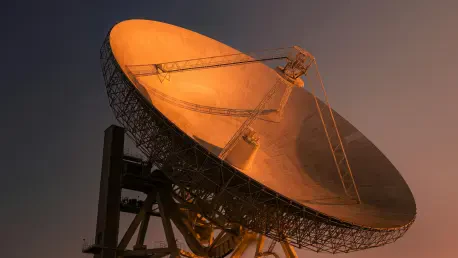In an era where global security dynamics are increasingly shaped by advanced technology, the strategic maneuvers of nations like Pakistan reveal a complex interplay of military ambition and geopolitical alliances, sparking intense discussions among defense analysts worldwide. The recent strides made by Pakistan in acquiring a sophisticated satellite constellation, primarily through collaboration with China, represent not just a technological leap but a calculated step toward enhancing nuclear deterrence capabilities on a global scale. The ability to monitor intercontinental ballistic missiles (ICBMs), particularly those of a superpower like the United States, underscores a shift in Pakistan’s defense posture beyond its traditional regional focus. Such a move raises critical questions about the motivations driving this initiative, the role of international partnerships, and the broader implications for global security. This exploration delves into the strategic necessities, technological advancements, and geopolitical contexts that frame Pakistan’s pursuit of space-based surveillance systems.
Strategic Imperatives for Advanced Surveillance
Pakistan’s quest for a satellite network capable of tracking U.S. ICBMs is rooted in a broader strategy to bolster its nuclear deterrence beyond regional rivalries. Historically, much of Pakistan’s military focus has centered on countering threats from neighboring India, but the development of ICBM capabilities signals an intent to engage with global security challenges. The necessity for real-time intelligence and missile guidance has become paramount as nuclear arsenals evolve and threats diversify. A satellite constellation offers the critical ability to monitor strategic assets worldwide, ensuring that Pakistan can respond effectively to potential long-range missile threats. This capability is not just about defense but also about projecting power and credibility on an international stage, aligning with commitments to allies who rely on Pakistan’s nuclear umbrella for protection. The emphasis on advanced surveillance reflects a recognition that modern warfare demands precision and foresight, both of which are enabled by space-based technologies.
Moreover, the strategic imperatives extend to fulfilling international defense agreements that require a robust deterrence posture. A significant driver is the recent Strategic Mutual Defense Agreement (SMDA) with Saudi Arabia, which binds Pakistan to extend nuclear protection to the kingdom. This commitment necessitates a surveillance system capable of detecting and tracking global nuclear threats, including those from major powers. Satellites equipped with high-resolution Synthetic Aperture Radar (SAR) provide detailed observational data, essential for identifying missile launches and trajectories across vast distances. Such technology ensures that Pakistan can maintain a credible deterrent, reassuring allies while deterring adversaries. The shift from a purely regional focus to a global outlook underscores the urgency of developing a satellite network, positioning Pakistan as a player in the complex arena of international security. This strategic pivot highlights the intersection of technology and diplomacy in shaping defense policies.
Technological Collaboration with China
The backbone of Pakistan’s satellite ambitions lies in its deep-rooted technological partnership with China, a relationship that has spanned decades and significantly shaped its military capabilities. A landmark $406.4 million deal with Piesat Information Technology Company, a Chinese firm, marks a pivotal moment in this collaboration, aiming to establish an integrated satellite system with 20 satellites in its initial phase. This network promises global communication and remote sensing capabilities, alongside the development of a satellite manufacturing facility in Pakistan. Such infrastructure not only enhances independent space expertise but also ensures sustained access to cutting-edge technology. China’s role as a key enabler is evident in this deal, providing both the hardware and technical support necessary for Pakistan to achieve its strategic goals. This partnership reflects a mutual interest, as shared data and technology could potentially benefit China’s military apparatus as well.
Beyond the immediate deal, the collaboration underscores a long-standing pattern of support that dates back to the early days of Pakistan’s nuclear and missile programs. The launch of the Pakistan Remote Sensing Satellite (PRSS-1) on a Chinese rocket earlier this year exemplifies the technical synergy between the two nations. This satellite enhances Pakistan’s observational capabilities, a critical component for any future ICBM program that requires precise guidance and targeting. China’s assistance is not merely transactional but strategic, aligning with broader geopolitical objectives to counterbalance other global powers. For Pakistan, this partnership offers a pathway to rapidly advance its space capabilities without the decades-long development timeline faced by other nations. The technological interdependence highlights how alliances can accelerate military modernization, positioning Pakistan to address emerging threats through a robust satellite network designed for global surveillance.
Geopolitical Implications and Future Outlook
The acquisition of a satellite constellation by Pakistan carries profound geopolitical implications, reshaping the landscape of international security and alliances. While the technology ostensibly serves to enhance nuclear deterrence, it also signals Pakistan’s intent to assert itself as a significant player beyond South Asia. The focus on tracking U.S. ICBMs suggests a preparedness for scenarios involving major global powers, a stance that could strain relations with some nations while strengthening ties with others, particularly China and Saudi Arabia. This development is likely to draw scrutiny from international bodies concerned with the proliferation of advanced military technologies and the potential for escalated tensions. The satellite network, therefore, is not just a defensive tool but a statement of strategic intent, reflecting Pakistan’s ambition to secure its interests in an increasingly multipolar world.
Looking ahead, the implications of this technological stride were evident in the strategic discussions that followed the announcement of the satellite deal. Analysts pondered the balance of power in regions far beyond South Asia, considering how Pakistan’s enhanced capabilities might influence global nuclear strategies. The collaboration with China was seen as a catalyst that could inspire similar partnerships elsewhere, potentially leading to a domino effect of satellite-based military advancements. As Pakistan moved forward with constructing its satellite infrastructure, the international community watched closely, aware that each launch and deployment marked a step toward a redefined security paradigm. The focus remained on how Pakistan balanced its newfound capabilities with diplomatic efforts to mitigate concerns, ensuring that its pursuit of deterrence did not ignite unintended conflicts but rather contributed to a stable, albeit complex, global order.









